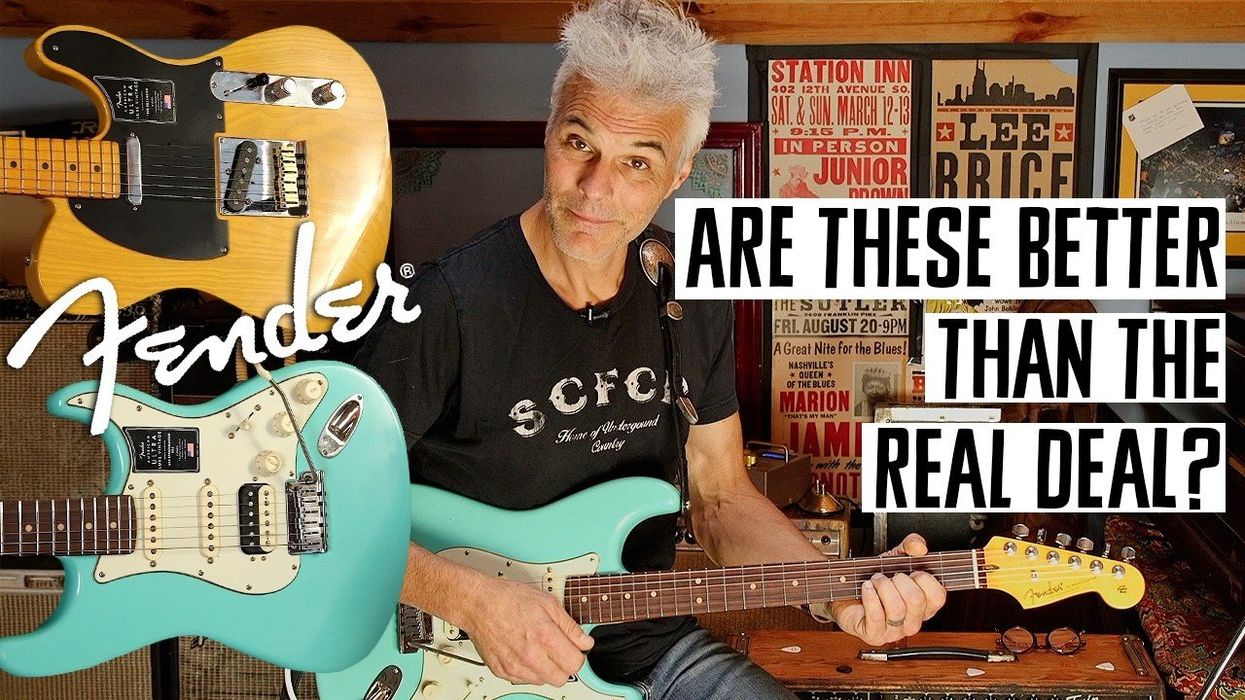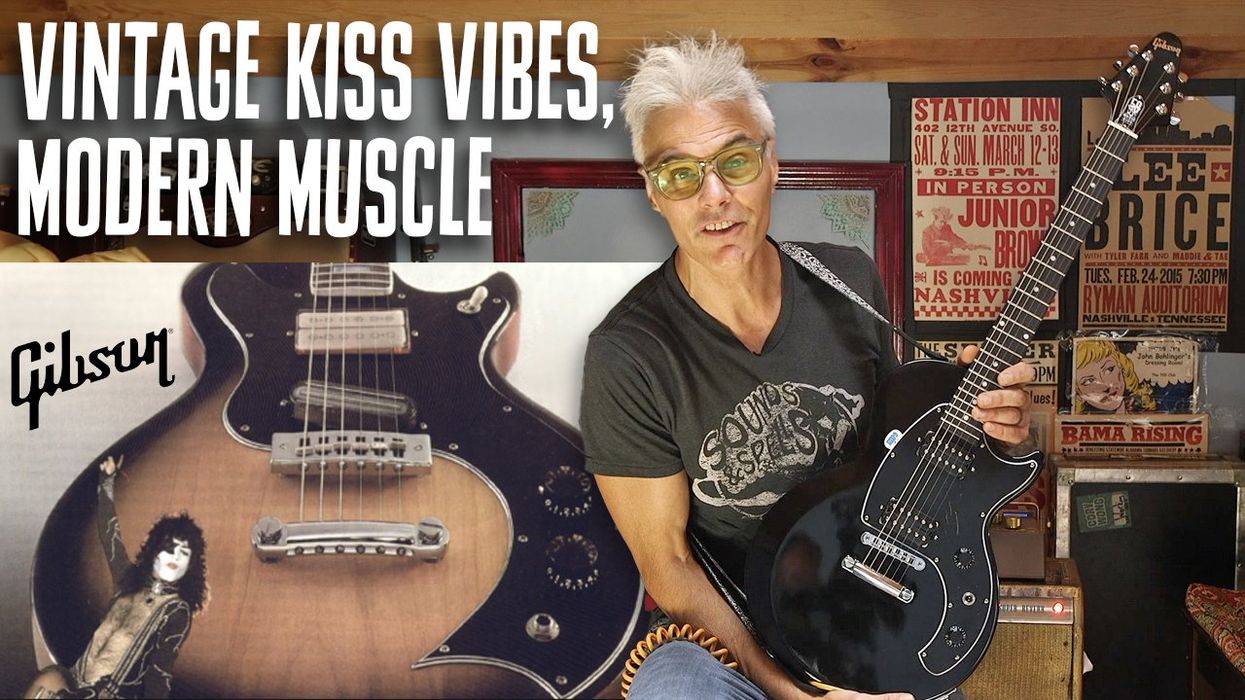Today, Fender launches their Ultra II line, an update to their modern Ultra Series, released in 2019. The new line was previewed at a media event in New York’s Lower East Side last week, where attendees got their hands on demo models of the Ultra II Stratocaster, Telecaster, Jazz Bass, and Meteora guitar and bass. Session and sideman guitarist Isaiah Sharkey and touring bassist and vocalist Annie Clements were on hand to give an impromptu performance on the new Stratocaster and Jazz Bass models.
If there’s one instrument that feels more representative of the forward-leaning line as a whole, it’s the Meteora. This high-end, high-performance take on the sleek, futuristic Meteora design is the only offset guitar in the Ultra II series, replacing the Jazzmaster, and features the company’s new Haymaker humbuckers. Fender Executive Vice President of Product Justin Norvell tells PG that when the team asked themselves, “What is an Ultra-level Jazzmaster?,” The Meteora was the answer.

The Ultra II Meteora also features the new Haymaker humbuckers.
Across the line, the Ultra II models feature aesthetic changes, including new body contours, smoother finishes on their anodized pickguards, updated tints and satin finishes on their compound-radius necks, and Luminlay side dots. The basses feature new preamps, and all Ultra II models also feature all-new noiseless pickups that Norvell says are “totally different from the Ultra I. We’re trying to get back to more of an alnico sound that feels more warm.”
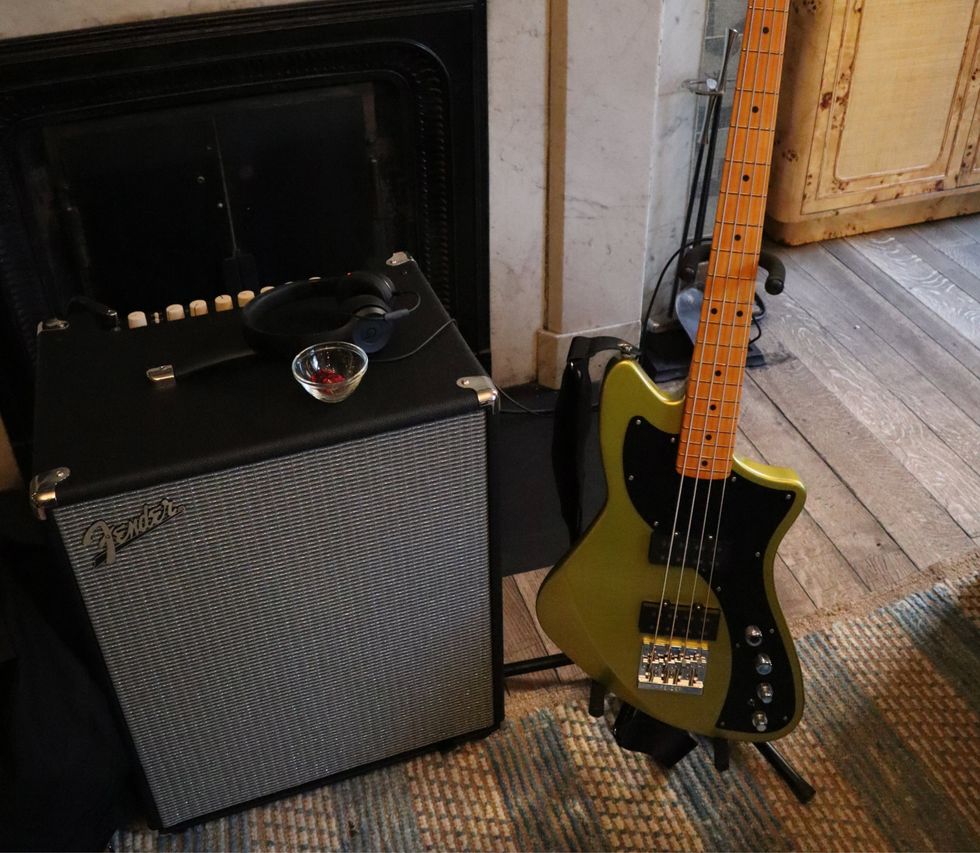
The new Ultra II Meteora bass.
“For an 80-year-old company, we could just be doing reproductions,” Norvell says. “Leo didn’t: A 1954 Strat was different by ’57—it had a V neck, it was alder, it had a different burst, you get into 3-tone guards, you get into rosewood. It was always moving. That is what we keep doing.”

All Ultra II models, including this Tele, feature updated body contours.

The Ultra II Jazz Bass in demonstration.
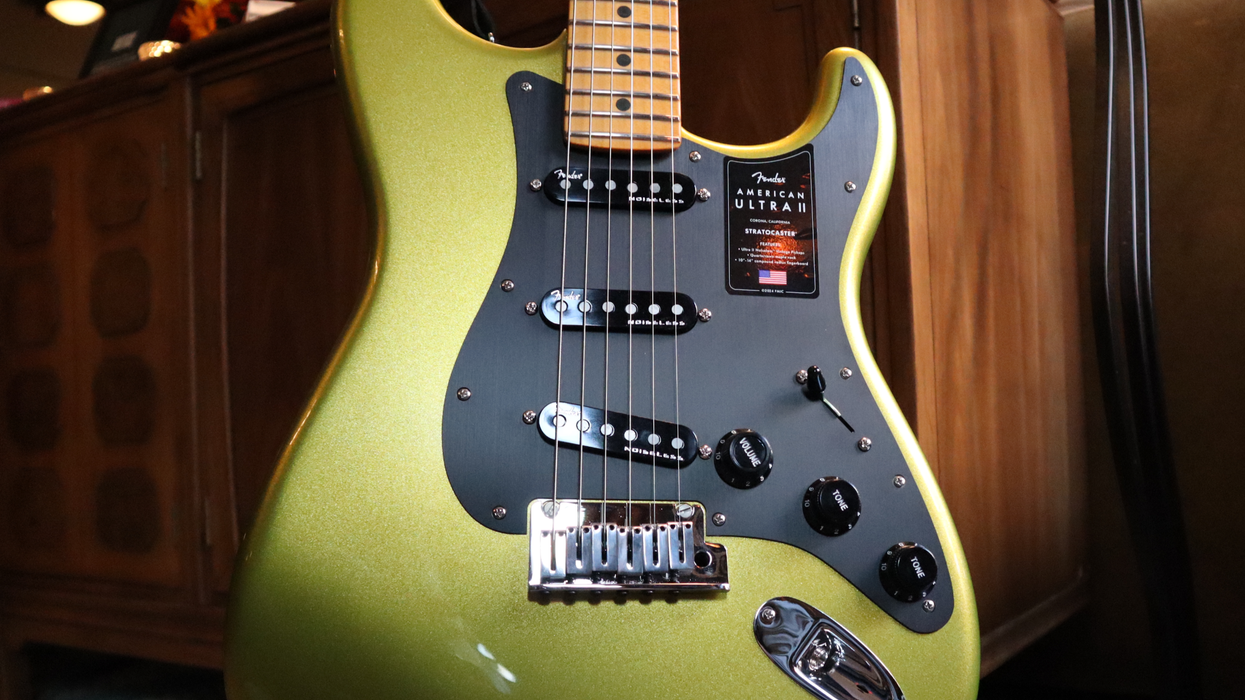


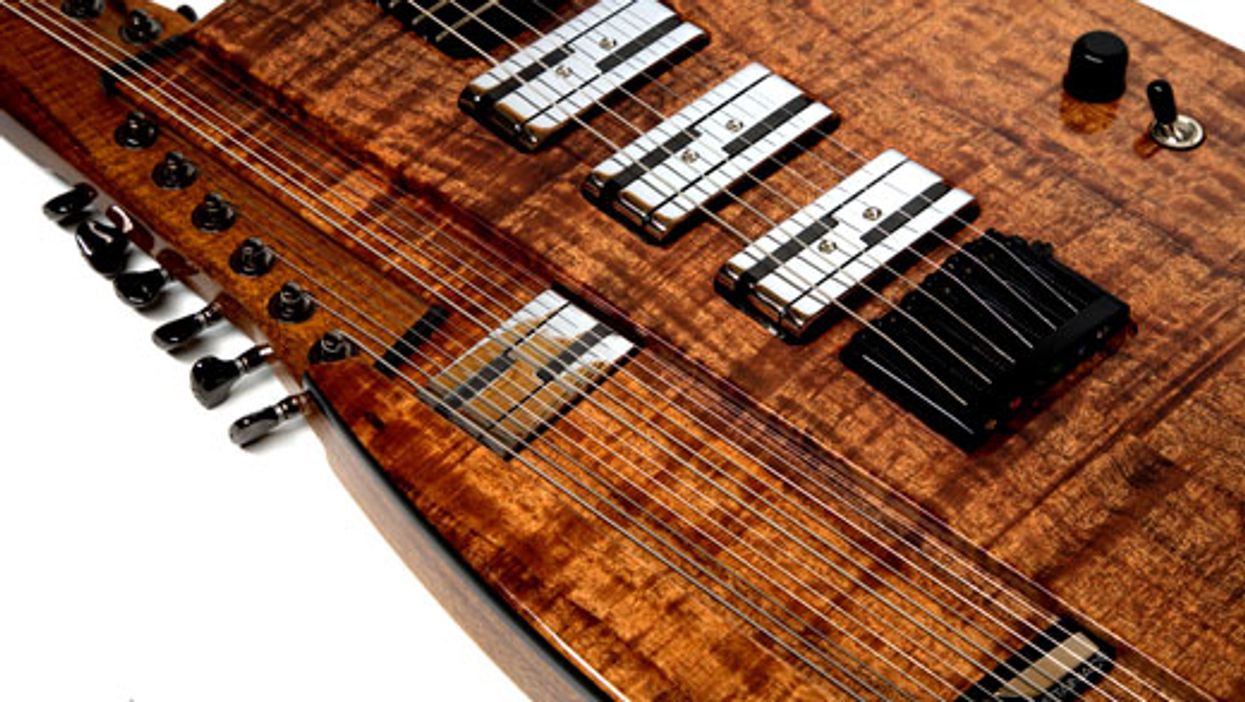
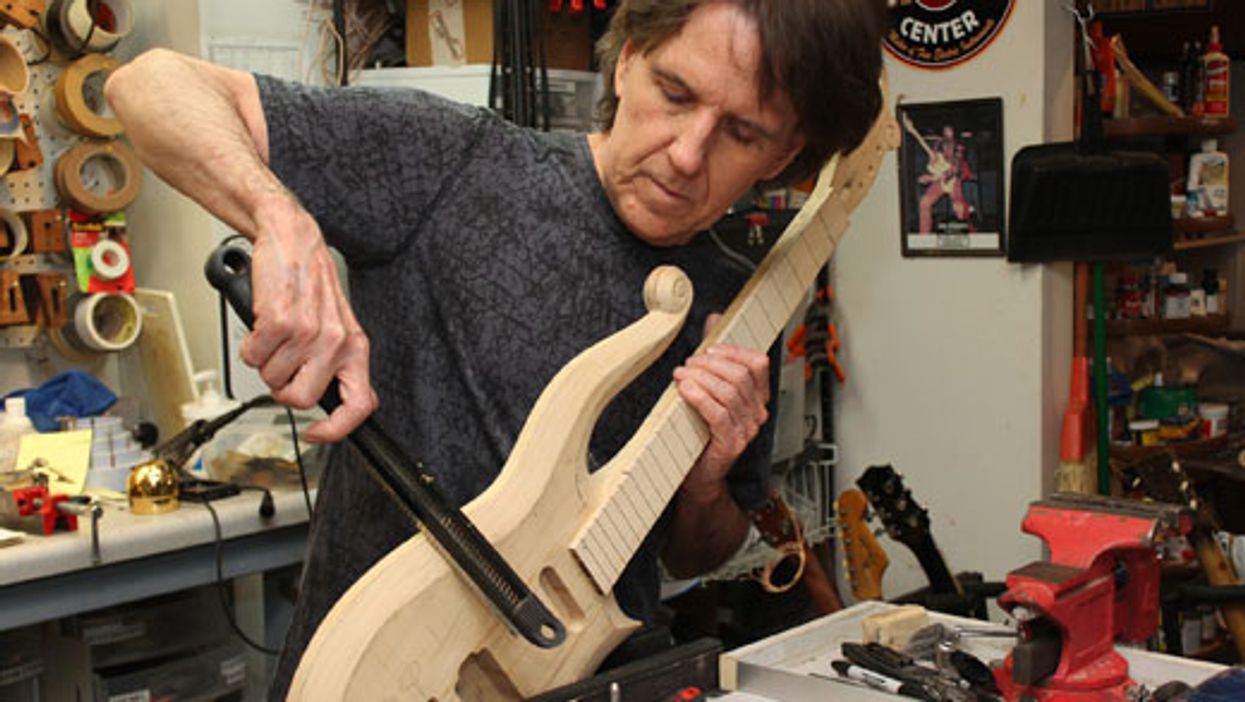
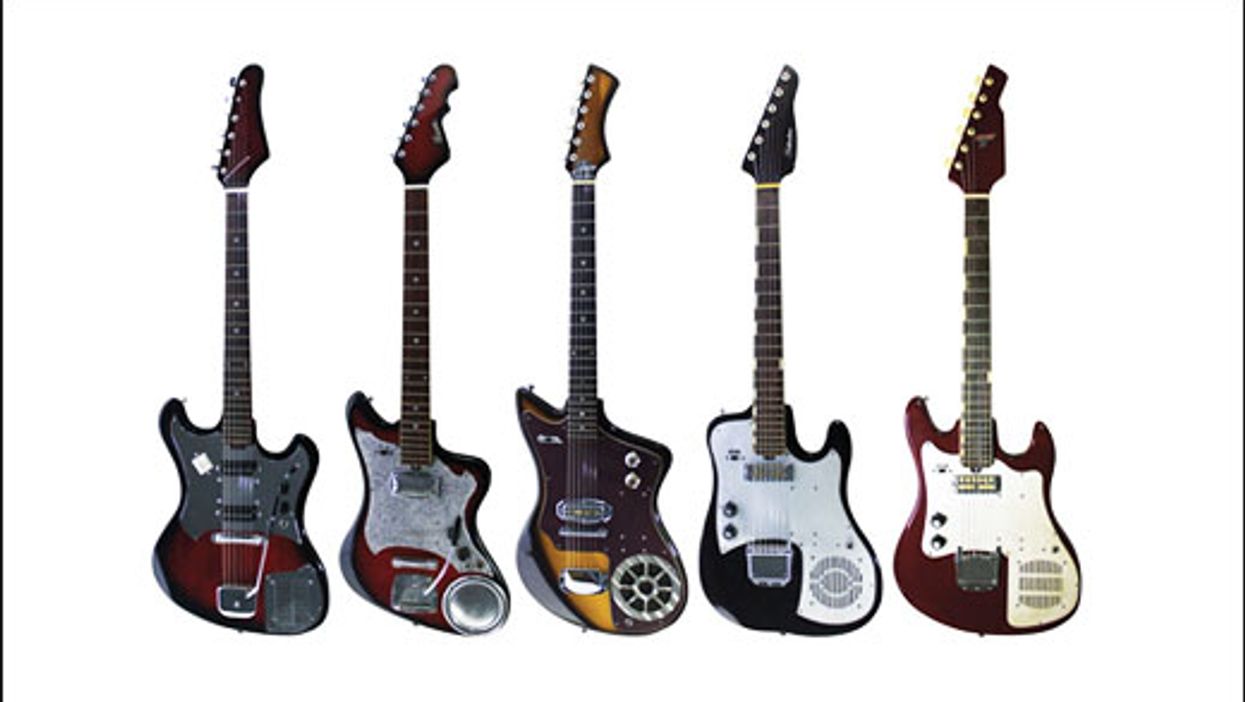





![Devon Eisenbarger [Katy Perry] Rig Rundown](https://www.premierguitar.com/media-library/youtube.jpg?id=61774583&width=1245&height=700&quality=70&coordinates=0%2C0%2C0%2C0)


